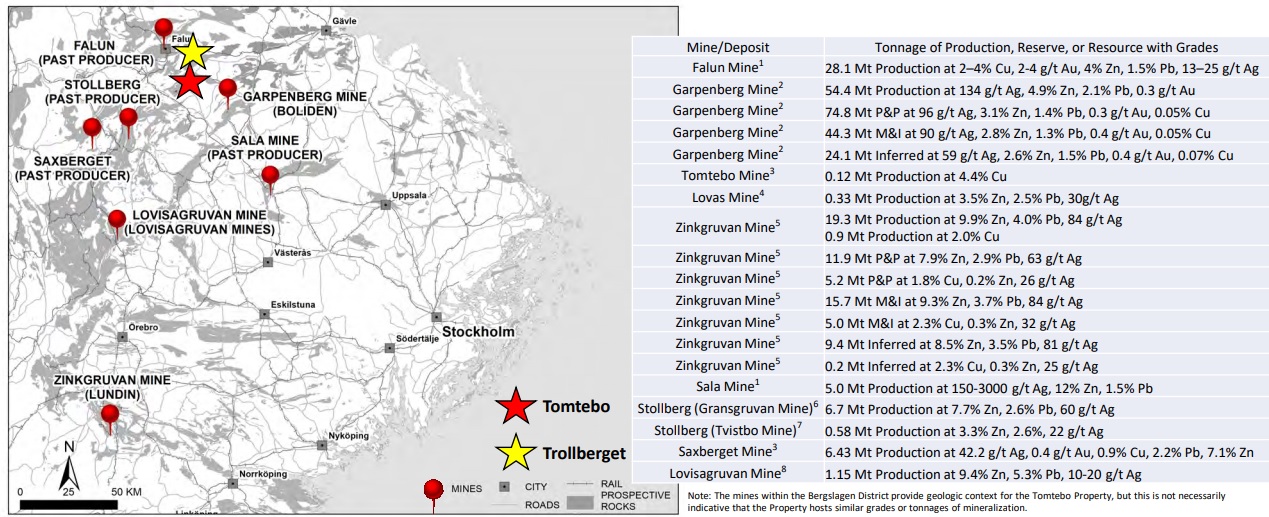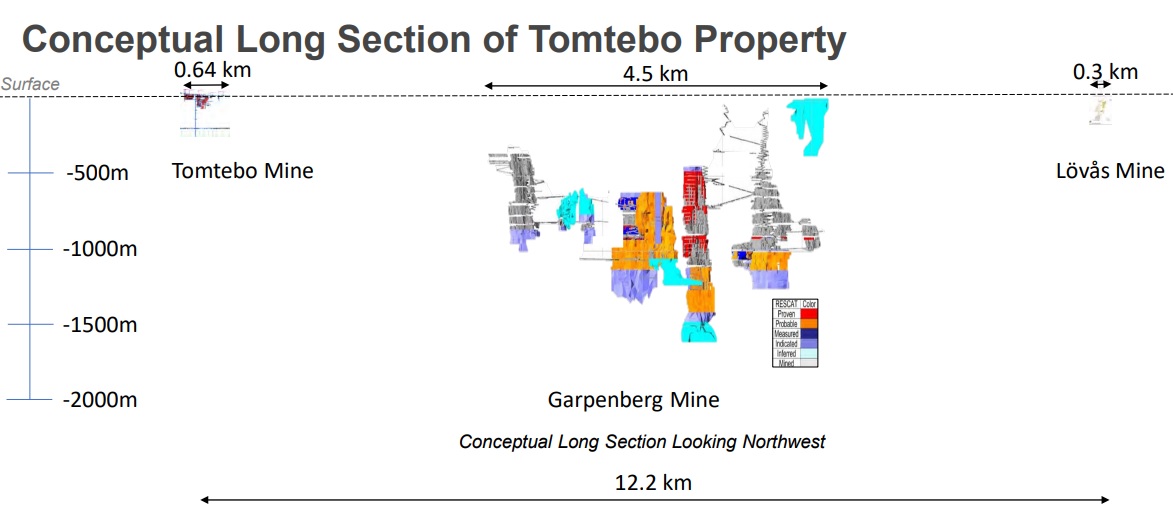
District Metals (DMX.V) completed the deal to acquire the past producing Tomtebo polymetallic mine in Sweden. The seller, EMX Royalties (EMX.V) has gathered a lot of data District Metals is currently plowing through, and last week District was able to release a first update with historical drill intervals from the Oscarsgruvan zone. And ‘historical’ really means historical in this case as District Metals is working its way through data from as far back as the first world war.
Some of the holes that have just been released indicate the presence of very high-grade mineralization close to surface. Hole TOMT65001 for instance encountered almost 5 meters containing almost 200 g/t silver, just under a gram of gold per tonne of rock and almost 21% ZnPb combined, resulting in a silver-equivalent grade of in excess of 1000 g/t (or a zinc-equivalent grade just exceeding 28%). And that wasn’t just a lucky shot, as you can see on the image below, several holes also encountered high-grade mineralization within this zone. Some intervals are narrower than others, some grades are higher and lower than others, but every single hole that has been published shows phenomenal grades.

These assay results indicate how prolific the Tomtebo project was, and what makes the asset even more intriguing is that the vast majority of the drill holes (95%) didn’t go deeper than 200 meters. Only eight holes went (slightly) deeper with the deepest hole reaching a depth of just 342 meters which basically means that everything below that is virgin territory. It could be absolutely barren rock but that appears to be unlikely given how strong the mineralization is closer to surface. Additionally, the nearby Garpenberg mine (owned and operated by Boliden) is currently mining rock from a vertical depth of almost 1,400 meters.
And that’s where the real upside of this project is. The just-reported historical drill holes are already very intriguing, mainly because previous operators were barely scratching the surface and didn’t bother to go deep. And the very few holes that actually did go slightly deeper all encountered mineralization, which confirms District’s belief the mineralization continues at depth and along strike.

District recently raised C$2.4M by issuing 20 million shares at C$0.12 in a no-warrant financing and appears to be fully funded for the first phase of the exploration program. Rather than going in blind and jump the gun with a drill program, District will first complete an airborne electromagnetic and magnetic survey this month (which will be the first time an EM survey will actually go deeper than the upper 200 meters). This will help the company to define and refine drill targets (as the conductive gold-copper dominant mineralization should light up on the images) while the silver-zinc-lead dominant mineralization will often show up as a magnetic high signature.
This is the first time ever the Tomtebo project will be subject to an airborne EM survey and that’s surprising as that usually is a standard technique to figure out a VMS system. District is eyeing a 100 meter line spacing and this should be a big help to define and refine drill targets down to depths of 500 m or greater ahead of a drill program in Q1 2021. The airborne survey should be completed in the next few days with final data available in 6 weeks. We estimate the company’s geophysical consultants will need about 3-4 weeks to fully interpret the final EM and magnetic data indicating we can expect news on this in September.
The systematic approach District Metals appears to be taking is quite appealing. Keep in mind CEO Garrett Ainsworth is the guy who led the technical teams that discovered and delineated Fission Uranium’s (FCU.TO) Triple R deposit, and NexGen Uranium’s (NXE.TO, NXE) Arrow deposit so we are fully confident in his approach and systematic method.
Disclosure: The author has a long position in District Metals. District currently is not a sponsor of the website but could become one.
